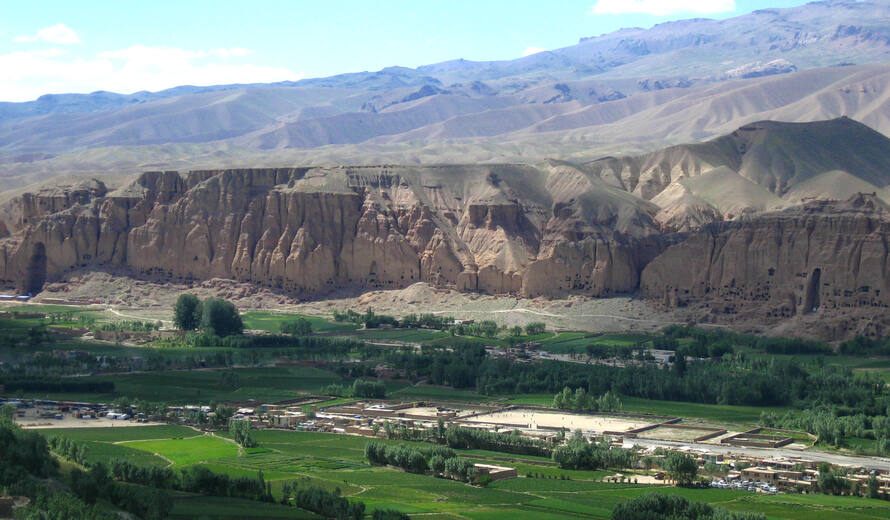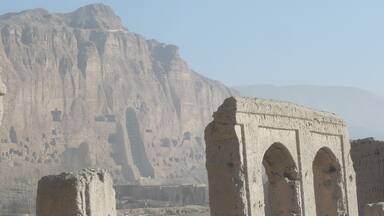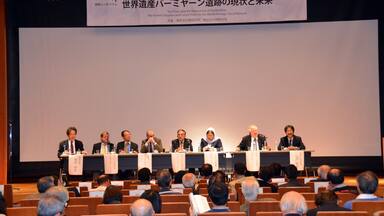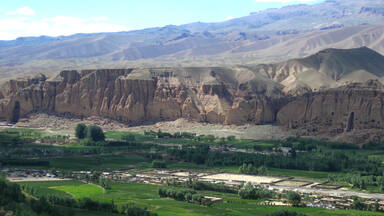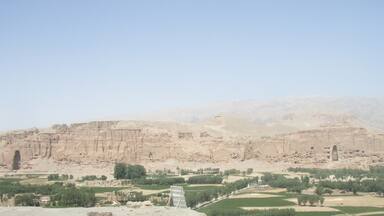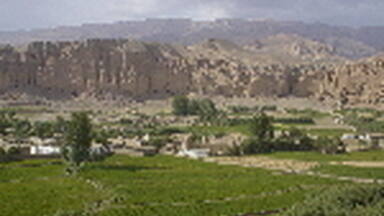Ten years on – remembering the tragic destruction of the giant Buddha statues of Bamiyan (Afghanistan)
UNESCO will commemorate the 10th anniversary of the tragic destruction of the giant Buddha statues of Bamiyan with a forum on the event and a two-day experts' meeting which will examine ways to preserve and present to the public the Cultural Landscape and Archaeological Remains of the Bamiyan Valley.
Ahead of the 10th anniversary, the Director-General, who will open the commemoration at UNESCO Headquarters urged the international community to protect the heritage of humanity from damage or destruction; turmoil, political appropriation and theft:
"Ten years ago UNESCO and the international community watched helplessly the destruction of the remarkable Buddha statues of Bamiyan. The two monumental statues had stood for one and a half millennia as proud testimonies to the greatness of our shared humanity. They were destroyed in the context of the conflict devastating Afghanistan and to undermine the power of culture as a cohesive force for the Afghan people.
"Since then, we have witnessed other instances where cultural heritage has fallen prey to conflict, political turmoil and misappropriation. All of us, governments, educators and the media, must raise awareness of the standards set by the World Heritage Convention of 1972, the Hague Convention on the Protection of Cultural Properties in the Event of Armed Conflict and its Protocol, and the Convention on the Means of Prohibiting and Preventing the Illicit Import, Export and Transfer of Ownership of Cultural Property."
UNESCO has led several major preservation projects in Afghanistan: In 2003, the Cultural Landscape and Archaeological Remains of the Bamiyan Valley was inscribed on UNESCO's World Heritage List and List in Danger. UNESCO has led a three-phase project - now almost completed - to preserve the Buddha niches in Bamiyan and their wall paintings. Japan has provided most of the funding for the project, which has also allowed for the safeguarding of the statues' fragments. Other UNESCO-led initiatives include the rehabilitation of the National Museum of Afghanistan; work to preserve the Minaret and Archaeological Remains of Jam (inscribed on UNESCO's World Heritage List in 2002), and an international campaign to return Afghan moveable cultural properties to the country.
Tolerance and cultural rapprochement will be the theme of a commemorative forum at UNESCO on 2 March, to be followed by the 9th Bamiyan Expert Working Group on 3 and 4 March, both of which are being organized with Afghanistan's Permanent Delegation to UNESCO.
Speakers at the International Forum, "Towards Cultural Rapprochement and Tolerance," will include the Minister of Information and Culture of the Islamic Republic of Afghanistan, Dr Sayed Makhdum Raheen; as well as Dr Altwaijri, Director-General of the Islamic Educational, Scientific and Cultural Organization (ISESCO); Mohammad Kacem Fazelly, Ambassador and Permanent Delegate of Afghanistan to UNESCO and ISESCO; Madanjeet Singh, UNESCO Goodwill Ambassador; and Habiba Sarabi the Governor of the Province of Bamiyan.
The future of the niches and options to present the remains of the Buddha statue will be among the subjects examined by the 9th Bamiyan Expert Working Group Meeting at UNESCO on 3 and 4 March. The meeting will bring together Afghan officials, international experts, donors and other stakeholders.
UNESCO does not favour rebuilding the Buddha statues, but the Experts Meeting will examine other ways to present their remains and niches while maintaining research and preservation in the Bamiyan Cultural Landscape. The site testifies to the region's rich Gandhara school of Buddhist art that, during the 1st to 13th centuries, integrated different cultural influences from East and West. The property contains numerous Buddhist monastic ensembles and sanctuaries, as well as fortified edifices from the Islamic period.
*****
